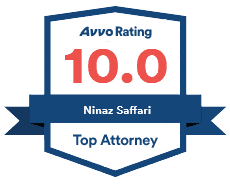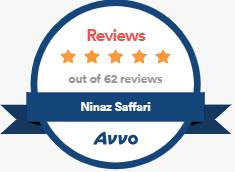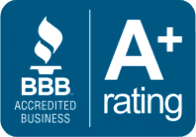Have you been ARRESTED or contacted by the Police, a Detective, FBI, or CPS?
DUI Overview
DUI’s Overview in Los Angeles
Your fun night out with friends could end badly if you are arrested for driving under the influence. DUI offenses are often prosecuted severely due to drunk drivers’ risk to other road users. California has various DUI laws, which, if violated, could have serious consequences, including incarceration and losing your driving privileges.
DUI offenses are also priorable, meaning that the more convictions you get, the more severe the penalties become. If you are a commercial driver, a Second DUI (Driving Under the Influence) (California Vehicle Code section 23540: conviction means the automatic loss of your livelihood.
Types of DUI Offenses in California
California has several DUI laws under which a person can be convicted. In most cases, when you are arrested for a DUI, you will be charged under California Vehicle Code section 23152(a) and 23152(b).
Under Vehicle Code section 23152(a), driving under the influence of an alcoholic beverage is illegal. This is a catch-all law that does not require any evidence for exceeding the legal limit of 0.08% if the prosecution provides evidence that you displayed signs of intoxication.
See Judicial Council of California Criminal Jury Instructions (“CALCRIM”) Number 2110 (“Driving Under the Influence — Veh. Code § 23152(a), (f), (g)”):
V.C. section 23152(b) is another common statute that makes it illegal to drive with a blood alcohol content (“BAC”) of 0.08% or more. Under this statute, it does not matter that you were not intoxicated or that your driving was not impaired, as long as there’s evidence that you had a blood-alcohol concentration of at least .08%.
See CALCRIM Number 2111 (“Driving with 0.08 Percent Blood Alcohol — Veh. Code § 23152(b)”):
1. First DUI (Vehicle Code § 23152)
The first DUI offense in California is usually a misdemeanor charge, particularly when the offense does not include the injury or death of another person.
When you are convicted of a first DUI in California, you face up to six months in county jail. The court may (and likely will) also impose additional sentencing terms such as:
- Attending a Driving Under the Influence (DUI) Program:
- Installing an Ignition Interlock Device (I.I.D.): in your car instead of a license suspension.
2. Second DUI (California Vehicle Code section 23540:
DUI offenses in California have a lookback period of ten years. The second time you are charged with driving under the influence of alcohol, you face harsher penalties than if you were charged with a first DUI offense. A Wet Reckless (California Vehicle Code section 23103: conviction on your record also counts as a prior DUI offense.
See CALCRIM Number 2125 (“Driving Under the Influence or with 0.08 or 0.04 Percent Blood Alcohol: Prior Convictions — Veh. Code §§ 23550, 23550.5 & 23566”):
For a second offense, you face a minimum mandatory sentence of 96 hours in jail. The maximum jail term for a second DUI offense is a year. Other penalties for a second DUI include:
- Mandatory attendance in a court-approved DUI school for 18 or 30 months; and
- Installation of an IID for a year or a two-year license suspension by the Department of Motor Vehicles (DMV):
In addition, the court will place you on misdemeanor probation for three or five years.
Criminal Defense
Menu










3. Third DUI
As with the first and second DUI, a third DUI conviction in California is still a misdemeanor but carries a minimum jail sentence of 120 days in county jail. You also face additional penalties such as:
- License suspension for up to three years or installation of an IID for two years; and
- Attendance of a court-approved DUI school for 30 months.
These penalties are meted out for defendants whose cases do not have additional aggravating factors. Some of the aggravating factors that trigger harsher penalties include:
- Driving with a BAC of 0.15% or more;
- Refusal to Submit to DUI Chemical Test (California Vehicle Code section 23612:
- Causing an accident while DUI;
- Speeding; and
- DUI with a child 14 years or younger in the car — Child Endangerment (California Penal Code section 273a:
4. Felony DUI
You can be charged with felony DUI in California under several circumstances. These include:
- You have three previous DUI or wet reckless convictions in the past ten years;
See CALCRIM Number 2125 (“Driving Under the Influence or with 0.08 or 0.04 Percent Blood Alcohol: Prior Convictions — Veh. Code §§ 23550, 23550.5 & 23566”):
- You have a prior felony DUI conviction; and
- You caused an accident that injured or killed another person while DUI.
See DUI (Driving Under the Influence) Causing Injury (California Vehicle Code section 23153:
See also CALCRIM Number 2100 (“Driving a Vehicle or Operating a Vessel Under the Influence Causing Injury — Veh. Code § 23153(a), (f), (g)”):
CALCRIM Number 2101 (“Driving with 0.08 Percent Blood Alcohol Causing Injury — Veh. Code § 23153(b):
Where this is your fourth DUI conviction, the court reserves the discretion to charge the offense as a misdemeanor. However, if you cause serious injury or death to another person, you will most likely get a felony conviction.
A felony DUI conviction carries a sentence of 16 months to three years in state prison. However, the penalties could be stiffer if you are convicted of the following offenses:
- DUI murder (a.k.a. “WatsonMurder” (California Penal Code section 187:
See People v. Watson (1981) 30 Cal.3d 290 at: https://caselaw.findlaw.com/ca-court-of-appeal/1838207.html
- Vehicular Manslaughter While Intoxicated (California Penal Code section 191.5(b):
- Gross Vehicular Manslaughter While Intoxicated (California Penal Code section 191.5(a):
5. DUI of Drugs
In addition to alcohol, DUID — Driving Under the Influence of a Drug (California Vehicle Code section 23152(f): could lead to DUI charges. You may be charged for driving under the influence of drugs if:
- You were under the influence of any drug (prescription, over-the-counter, or illegal);
See Being Under the Influence of a Controlled Substance (California Health and Safety Code section 11550:
- You were under the influence of both alcohol and drugs.
When charged with a DUID offense, the penalties will depend on:
- Prior DUID convictions;
- Injuries or death arising from an accident you caused while driving under the influence of drugs.
The penalties for misdemeanor and felony DUID are similar to those for driving under the influence of alcohol (either with or without injury).
6. “Commercial DUI”
Commercial drivers are charged based on V.C. § 23152(d), which makes it unlawful to drive a commercial vehicle with a BAC of .04% or higher. The prosecution must provide evidence that you were driving a commercial vehicle to be charged with commercial DUI.
See CALCRIM Number 2114 (“Driving With 0.04 Percent Blood Alcohol with a Passenger for Hire — Veh. Code § 23152(e)”):
See also CALCRIM Number 2102 (“Driving with 0.04 Percent Blood Alcohol Causing Injury with a Passenger for Hire — Veh. Code § 23153(e)”):
Nonetheless, even if you are charged with another DUI offense, you could still lose your commercial driver’s license. Once arrested for a DUI while driving a commercial vehicle, you face up to a year in county jail for the first offense. Your commercial driver’s license will also be suspended for up to a year.
You could lose your license permanently if you are convicted of a second DUI while operating a commercial vehicle.
Commercial DUI can also be charged as a felony if you caused an accident that killed or injured a third party.
7. Underage DUI
In California, an underage driver is younger than 21. These drivers cannot legally buy or drink alcohol. California’s zero-tolerance law cracks down hard on underage drivers who drink and drive with a detectable BAC. Based on zero tolerance laws, a BAC of 0.01% is enough to trigger a DUI conviction.
See: Driving with 0.05 Percent Blood Alcohol when Under 21 (California Vehicle Code section 23140(a):
See also: CALCRIM Number 2113 (“Driving with 0.05 Percent Blood Alcohol when Under 21 — Veh. Code § 23140(a)”):
Since it’s illegal to buy alcohol if you are under 21, you could also be charged with a DUI if you have an open alcoholic beverage in your vehicle.See: Possession of an Open Container in a Vehicle by a Person Under 21 (California Vehicle Code section 23224:
In addition to underage drivers, zero-tolerance laws apply to adult drivers on probation for a DUI offense.
Drivers under 21 who are charged with underage DUI face up to one year of license suspension and mandatory attendance at an alcohol education program if they are 18 or older. Underage drivers with multiple DUI convictions face up to three years of license suspension.
8. “DUI Murder”
In most cases, the court orders the defendant to attend a DUI school after the first DUI offense as part of their penalties. During the DUI program, you are given what is known as a “Watson admonition”. The Watson admonition is a warning given to those convicted of violating California DUI laws.
Its purpose is to warn the defendant of the dangers of drunk driving and the risk of causing serious injury or death to another person. Those given the Watson admonition are also informed of the possibility of being charged with murder should they be convicted for killing another person while driving under the influence.
See, e.g., Second-Degree Felony-Murder (California Penal Code section 190):
See also: Second-Degree Murder (California Penal Code section 192(a)&(b):
In most cases where an intoxicated driver kills another person, the charges are usually Vehicular Manslaughter while Intoxicated (Penal Code section 192(c)(1)) or Gross Vehicular Manslaughter while Intoxicated (Penal Code section 191.5(a)). However, the court might choose to charge the offense as Second-Degree Murder if:
- You were extremely negligent (or reckless) while driving;
- You had a BAC of 0.15% or more;
- You were actively trying to evade a peace officer when the victim died; or
- You have multiple drunk driving convictions on your record.
DUI murder is, again, a form of Second-Degree Murder that carries a prison sentence of 15 years to life.
See: Punishment for Second-Degree Murder (15 years to life with possible parole) (California Penal Code section 190.05(a):
The sentence could be higher (i.e., 25 years to life with potential parole) if there were multiple victims killed or injured.
DUI Proceedings
A DUI arrest triggers two main proceedings:
- The DMW administrative “per se” hearing, and
- A criminal proceeding in state court.
Administrative Hearing
Whenever you are arrested for a DUI offense, the arrest automatically triggers a license suspension if you have a BAC of 0.08% or higher. The administrative hearing differs from California DUI criminal proceedings in that you do NOT have to be convicted in court for the DMV to suspend your license.
See: DMV DUI Administrative Hearing:
The DMV allows you to challenge the suspension, but to do so, you must request a hearing within ten days of your arrest. The DMV immediately suspends your license when the ten-day window passes without you requesting the hearing.
You can schedule a DMV hearing by calling the number on the “Notice of Suspension” that the arresting officer gives you, or you can call a Driver Safety Office.
See: DMW Driver Safety Offices:
Once you schedule a DMV hearing, the DMV will issue you a temporary driver’s license valid for 30 days. You will, therefore, retain your driving privileges until the DMV conducts the hearing and decides whether to suspend your license.
The DMV hearing is conducted at a DMV office. It includes a DMV hearing officer, you (the driver) and/or your attorney, and any witnesses (including a police officer or sheriff’s deputy, for example).
During the hearing, the DMV seeks to establish that you were driving and that your BAC limit was above the legal limit at the time. You or your attorney can present evidence to challenge the suspension. The hearing officer will rely on the evidence presented to decide on whether to suspend your driver’s license.
If the DMV finds that you violated the administrative per se law, your driver’s license will be suspended as follows:
- Four months for the first per se DUI offense:
- One year for a second DUI violation;
- One year for refusing to submit a chemical test.
DUI Criminal Proceedings
The DUI criminal proceedings usually begin when a police officer pulls you over at the roadside. It starts with a DUI investigation which may include field sobriety tests, observation, and preliminary alcohol screening.
If the officer reasonably believes you are intoxicated, he or she will arrest you. Once in custody, the police officer will subject you to a BAC test. This test can be done at the roadside itself, a hospital, the police station, or at the jail. The officer might also order a blood or urine test if they suspect that you were driving under the influence of drugs.
Refusing a chemical test while in custody will result in additional penalties. See Vehicle Code section 23612. After the DUI chemical tests, the arresting officer will book you and release you, depending on the circumstances of your situation. You must also sign a promise to appear in court on the identified date if released at this stage. Alternatively, you may have to post bail to be released.
Once the booking procedure is complete, the arresting officer completes a police report about the DUI and submits it to the prosecuting agency. The prosecutor decides whether to file charges.
If the prosecution formally files DUI charges against you, your case is now officially in the California court system, which includes the following steps:
1. Arraignment
An arraignment is the first step in the criminal court proceedings. The purpose of the arraignment is your entering an initial plea on your charge(s). The plea could be “guilty,” “not guilty,” or “no contest.” A “guilty” or “no contest” plea leads the court proceedings to the sentencing phase.
2. Pretrial Proceedings
The pretrial process is the second stage of the DUI court proceedings following a “not guilty” plea.
During the pretrial stage of the criminal process, your attorney should thoroughly investigate the allegations against you. Your charges may be dismissed or reduced if he or she can find sufficient evidence to challenge the prosecution’s case.
During this stage, your attorney may file pretrial motions to:
- Contest the validity of the initial DUI stop or arrest;
- Suppress illegally obtained evidence;
- Discredit the officer’s report and testimony.
See, e.g., Motion to Suppress Evidence (California Penal Code section 1538.5:
Motion to Dismiss (California Penal Code section 995:
In addition to pretrial motions, your attorney may negotiate with the prosecutor to have your charges reduced to a lesser offense.3. Trial
Pretrial proceedings take many months, depending on the circumstances of the case. A DUI case proceeds to trial when the case does not end in a plea bargain or dismissal of the charge(s).
Each defendant is entitled to a jury trial. We can break down the trial process into:
- Jury selection;
- Opening statements;
- Case-in-chief (the prosecution and defense present their evidence);
- Closing arguments; and
- Verdict and (if found guilty) sentencing.
Trials are often unpredictable and rely mostly on the prosecution’s ability to prove that the defendant is guilty “beyond a reasonable doubt.” You will be acquitted if the jury finds you not guilty of the DUI charge(s).
During the pretrial and trial process, your attorney will present various defenses to fight your charges. The common DUI defenses include:
- The police did not have probable cause to stop or arrest you:
- The investigating officer made mistakes in conducting field sobriety tests:
- You were not under the influence of alcohol or drugs. In this case, you can argue that the signs you displayed could be explained by fatigue or an existing medical condition;
- You were not driving the subject vehicle;
- The police engaged in official misconduct such as executing an unlawful arrest, racial profiling, or committing perjury;
- You were merely driving erratically (but soberly);
- The field sobriety test was inaccurate;.
- Mouth alcohol resulted in an exaggerated BAC result;
- The officer failed to observe you for the required 15 minutes before issuing a DUI breath test:
- The officer violated Title 17 regulations on chemical and breath tests (see: https://casetext.com/regulation/california-code-of-regulations/title-17-public-health/division-1-state-department-of-health-services/chapter-2-laboratories/subchapter-1-service-laboratories/forensic-alcohol-analysis-and-breath-alcohol-analysis/article-1-general/section-1215-definitions
- Your BAC was rising during the investigation;You were mentally alert while driving; andYou have medical conditions that led to a higher BAC result.
4. Sentencing
The sentencing hearing entails the judge reading the particulars of your conviction, its penalties, and the additional conditions you must fulfill as part of your sentence.
If you were convicted of a felony DUI charge, the judge will request a probation report recommending a sentence for the offense. The judge also engages with the prosecution on the appropriateness of the sentence.
You also have the opportunity to argue for a lesser sentence. This can include:
- Showing remorse for your crime;
- Showing the steps you have taken after the experience (for example, attending rehab and AA meetings); and
- Completing any pre-sentencing requirements.
DUI Pretrial Diversion
California has pretrial diversion programs that allows an eligible defendant to avoid jail time by going through treatment.
Mental Health Diversion (California Penal Code section 1001.36:
Drug Diversion (California Penal Code section 1000:
Proposition 36 Drug Treatment Diversion Program:
Judicial Diversion (Court Initiated Diversion) (California Penal Code section 1001.95:
Informal Diversion (California Penal Code section 1001.94: and California Penal Code section 1001.95:
Misdemeanor DUI convictions previously qualified for drug diversion until the appellate courts in California ruled that these offenses do not qualify for pretrial diversion.
However, military members can still access pretrial diversion if they can prove that their drug or alcohol use problems result from trauma from their service. Examples of trauma that qualifies a veteran for pretrial diversion include:
- Sexual trauma
- Mental health issues
- Traumatic brain injury
- PTSD
- Substance abuse.
See: Military Diversion (a.k.a. Veterans Diversion) (California Penal Code section 1001.80:
"Ninaz is highly professional, organized, and talented."
RobertClient
"I always refer to Ninaz Saffari as a fighter in the courtroom. I walked out of court a free-man due to this attorney's hard work and know-how."
Kevin F.Client
"She not only makes you feel comfortable but she is very competent and experienced in pretty much any kind of situation and scenario. I feel very lucky to know her."
AddyClient